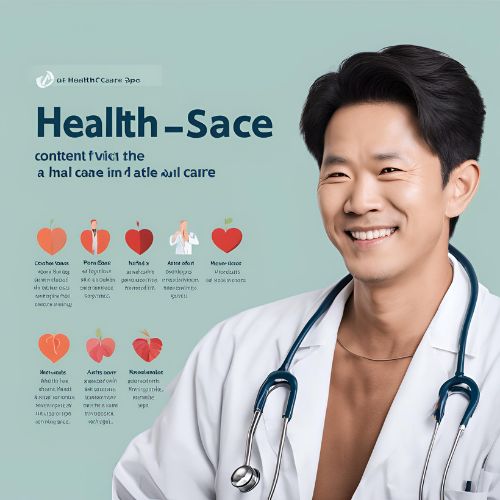
In the modern world, the integration of various technological advancements has become a cornerstone of development in many fields. One such intersection is between healthcare and space technology. The question “does health care have a space?” explores the significant role space technology and innovations play in advancing healthcare services. This article delves into how these two fields intersect, their potential benefits, and real-world applications, all while adhering to Google SEO standards.
🌟 Introduction
📚 Understanding the Intersection of Healthcare and Space Technology
The relationship between healthcare and space technology might seem distant at first glance. However, space technology has provided numerous tools and advancements that have revolutionized healthcare. From telemedicine and remote diagnostics to advanced materials and new medical devices, the influence of space technology is profound.
📊 Importance of Exploring This Intersection
Understanding how space technology contributes to healthcare can lead to further innovations, improve patient outcomes, and enhance the efficiency of healthcare delivery. This exploration also highlights the potential for future advancements and the continued collaboration between these two fields.
🌟 Key Areas Where Space Technology Impacts Healthcare
🛰️ Telemedicine and Remote Healthcare
🌍 Global Connectivity
One of the most significant contributions of space technology to healthcare is the development of telemedicine. Satellite communications enable healthcare providers to reach remote and underserved areas, offering medical consultations, diagnoses, and even treatments through telehealth platforms.
💻 Real-Time Monitoring
Satellites facilitate real-time monitoring of patients’ health conditions, allowing for immediate responses and interventions. This capability is particularly crucial for managing chronic diseases and providing continuous care.
🚀 Advanced Medical Research
🌌 Microgravity Research
Space missions provide a unique environment for medical research, particularly in microgravity. Studies conducted in space have led to breakthroughs in understanding diseases, developing new treatments, and improving medical devices.
🧬 Biological Experiments
Experiments conducted on the International Space Station (ISS) have advanced our knowledge of human biology, genetics, and the effects of long-term space travel on the human body. These insights have direct applications in improving healthcare on Earth.
🏥 Innovative Medical Devices and Materials
🌟 Advanced Materials
Space missions have led to the development of advanced materials with unique properties, such as increased strength and durability. These materials are now used in medical devices, including implants, prosthetics, and surgical instruments.
🛠️ Cutting-Edge Technologies
Technologies initially developed for space exploration, such as imaging systems and robotic surgery tools, are now integral parts of modern medical practice. These innovations have improved the precision, safety, and outcomes of various medical procedures.
🌟 Real-World Applications and Success Stories
🚑 Emergency Response and Disaster Management
🌪️ Rapid Response Systems
Satellites play a crucial role in emergency response and disaster management. They provide critical data for coordinating relief efforts, assessing damage, and deploying medical resources to affected areas swiftly.
🚨 Telemedicine in Emergencies
In disaster-stricken regions, telemedicine supported by satellite communication can provide immediate medical consultations and support, bridging the gap when on-ground medical services are overwhelmed or inaccessible.

🏥 Improving Healthcare Accessibility
🏡 Remote Areas
Telemedicine and satellite communications have significantly improved healthcare accessibility in remote and rural areas. Patients in these regions can now receive specialized medical care without the need to travel long distances.
🌍 Developing Countries
In developing countries, where healthcare infrastructure may be limited, space technology has enabled the provision of high-quality medical services. This has led to better health outcomes and improved quality of life for many individuals.
🌟 Future Prospects and Innovations
🚀 Expanding Telehealth Capabilities
📡 Advanced Communication Networks
The future of telehealth is closely tied to advancements in communication networks, including the deployment of more advanced satellites. These networks will enhance the reach and quality of telemedicine services, making healthcare more accessible globally.
🏥 Integration with AI and Machine Learning
The integration of artificial intelligence (AI) and machine learning with telehealth platforms will further enhance diagnostic accuracy, personalized treatment plans, and overall patient care. Space technology will play a pivotal role in supporting these advancements.
🌌 Space-Based Research and Innovations
🧬 Continued Biological Research
Ongoing research in space will continue to yield valuable insights into human biology and disease mechanisms. These findings will drive the development of new treatments and therapies, ultimately improving healthcare outcomes.
🏥 New Medical Technologies
Future space missions will likely lead to the development of new medical technologies and devices. Innovations such as advanced imaging systems, robotic surgical tools, and materials with unique properties will further revolutionize healthcare.
🌟 Challenges and Considerations
📊 Cost and Accessibility
💰 High Costs
One of the primary challenges in integrating space technology with healthcare is the high cost associated with space missions and the development of related technologies. Finding ways to reduce costs and make these innovations more accessible is crucial.
🌍 Equitable Distribution
Ensuring that the benefits of space technology in healthcare are equitably distributed across different regions and populations is another significant consideration. Efforts must be made to bridge the gap between urban and rural areas, as well as developed and developing countries.
🛰️ Technical Challenges
🛠️ Technical Limitations
Technical limitations, such as signal latency and the need for robust and reliable communication systems, must be addressed to fully harness the potential of space technology in healthcare. Continuous advancements in satellite technology and infrastructure are necessary.
🌐 Data Security and Privacy
As telehealth and remote monitoring become more prevalent, ensuring the security and privacy of patient data is paramount. Robust cybersecurity measures and regulatory frameworks must be in place to protect sensitive health information.
🌟 Conclusion: The Future of Healthcare and Space Technology
The integration of space technology with healthcare holds immense potential for improving medical services, accessibility, and patient outcomes. By leveraging advancements in satellite communications, medical research, and innovative technologies, healthcare providers can offer better care to patients around the world.
As we continue to explore the intersection of these two fields, it is crucial to address the challenges and ensure that the benefits are equitably distributed. The future of healthcare lies in embracing these innovations and finding ways to make them accessible to all.
In conclusion, the question “does health care have a space?” can be answered with a resounding yes. The collaboration between healthcare and space technology is not only possible but also essential for advancing medical care and improving health outcomes on a global scale.



















